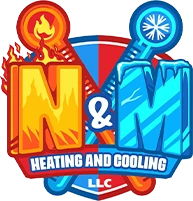Heat pumps are an efficient and versatile solution for both heating and cooling homes. However, like any mechanical system, they can develop issues over time that require attention. Recognizing the signs that your heat pump needs repair can help you address problems early, ensuring your system continues to function efficiently and reliably.
Strange Noises Emanating from Your Heat Pump
Common Unusual Sounds and Their Causes
Hearing strange noises from your heat pump is often a sign that something is wrong. Different sounds can indicate different issues. For example, rattling might mean that some parts have come loose inside the unit. A grinding noise could suggest that there is an issue with the motor bearings, while a hissing sound might indicate a refrigerant leak. Clicking sounds can be a sign of electrical problems, and banging or thumping noises often point to issues with the blower or internal components.
Immediate Actions to Take
If you hear unusual noises, it is essential to act quickly to prevent further damage. First, turn off the heat pump to avoid causing more harm to the system. Then, contact our professionals for a thorough inspection and repair. Delaying repairs can lead to more severe issues down the line, making it more challenging and costly to fix. Our technicians can identify the root cause of the problem and perform the necessary repairs to get your heat pump running smoothly again.
Inconsistent Indoor Temperatures
Signs of Uneven Heating or Cooling
If your home has inconsistent indoor temperatures, it might be a sign that your heat pump is not working correctly. You may notice that certain rooms are significantly warmer or cooler than others, even when the thermostat is set to a consistent temperature. This uneven distribution of heat or cool air often signals an issue with the heat pump’s operation, ductwork, or air distribution system.
Potential Underlying Issues
Several underlying issues can cause inconsistent indoor temperatures. Blocked or leaking ductwork can prevent heated or cooled air from reaching certain parts of your home evenly. Problems with the heat pump’s components, like the blower fan or the reversing valve, can also affect the distribution of air. Additionally, a malfunctioning thermostat can lead to inaccurate temperature readings and poor regulation, resulting in uneven heating or cooling. Our professionals can diagnose these issues and provide the necessary repairs or replacements, ensuring your home maintains a consistent and comfortable temperature.
Spike in Energy Bills
How a Malfunctioning Heat Pump Can Increase Energy Costs
A sudden spike in your energy bills is a clear indication that something may be wrong with your heat pump. When a heat pump is not operating efficiently, it often has to work harder to maintain the desired temperature in your home. This increased effort leads to higher energy consumption and consequently, higher utility bills. Malfunctions like a refrigerant leak, a failing compressor, or clogged filters can all cause your heat pump to use more energy than necessary.
Diagnostic Steps to Confirm a Problem
To confirm whether your heat pump is the culprit behind the spike in energy bills, you can take several diagnostic steps. Start by checking the filters and clean or replace them if they are dirty. Look at the thermostat settings to ensure they are correct and that the system is not set to an overly high or low temperature. If you notice any unusual sounds or reduced airflow, these could be signs of underlying issues. For a more thorough diagnosis, it is best to call our professionals. Our technicians can perform a comprehensive inspection and pinpoint the exact problem, ensuring it gets resolved efficiently.
Frequent Cycling On and Off
Understanding Short Cycling
Frequent cycling on and off, also known as short cycling, is when your heat pump turns on and off repeatedly in short intervals. This behavior is inefficient and can lead to higher energy bills as well as increased wear and tear on your system. Short cycling often happens due to issues like refrigerant leaks, compressor problems, or an oversized heat pump that heats or cools the home too quickly, causing the thermostat to cycle the system on and off.
How Thermostat Issues Can Contribute to the Problem
A malfunctioning thermostat can also lead to short cycling. If the thermostat is not accurately reading the indoor temperature, it may cause the heat pump to turn on and off more frequently than it should. Issues like faulty wiring, poor placement, or an aging thermostat can all contribute to inaccurate readings. Replacing or repairing the thermostat can often solve the problem of short cycling. Our professionals can diagnose whether the thermostat or another component of your heat pump is causing the issue and recommend appropriate repairs or replacements.
Conclusion
Recognizing the signs that your heat pump needs repair is vital for maintaining a comfortable home and avoiding costly energy bills. From strange noises and inconsistent temperatures to spikes in energy costs and frequent cycling, these indicators should not be ignored. Timely intervention can prevent minor issues from turning into major problems, ensuring your heat pump operates efficiently throughout its lifespan.
If you experience any of these signs, reach out to our team at N&M Heating & Cooling LLC. Our skilled professionals are ready to diagnose and fix any issues, ensuring your heat pump operates at its best. Contact us today for expert heat pump repair services in Hereford.









